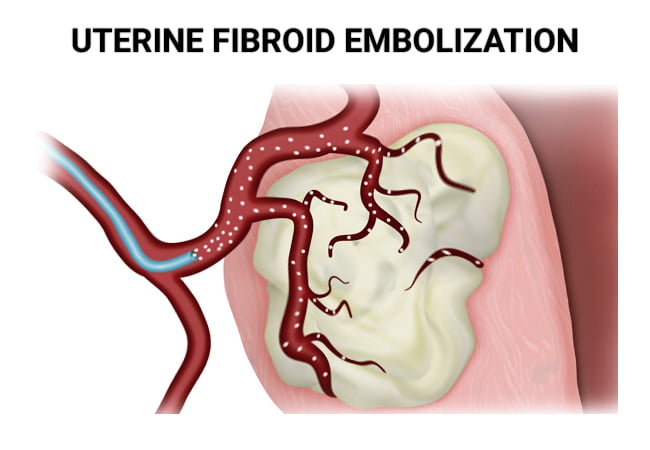
While uterine fibroid embolization (UFE) is the least invasive fibroid removal procedure you can get, you still have to plan on taking it easy for a couple weeks after the treatment. Dr. George Bolotin at the Astra Fibroid Treatment Specialists in Brooklyn, NY and Bronx, NY spells out what you can expect following UFE. It’s far less than you’d have to endure if you have more traditional treatments. And there are far fewer risks. One of the most attractive benefits is the reduced recovery time you need after getting rid of those bothersome uterine fibroids. Call the practice today to make an appointment.
UFE, clinically called a uterine fibroid embolization, is an alternative treatment for uterine fibroids that’s minimally invasive. Left untreated, fibroids can debilitate your life with severe symptoms that can have a physical and emotional impact on your life, such as:
 During the UFE procedure, an Interventional Radiologist who specializes in fibroids introduces embolic agents into the blood vessels that are supplying blood to the uterine growths. Fibroids, like all cells, rely on blood for nutrients. When the supply is cut off, the muscular growths shrink and die.
During the UFE procedure, an Interventional Radiologist who specializes in fibroids introduces embolic agents into the blood vessels that are supplying blood to the uterine growths. Fibroids, like all cells, rely on blood for nutrients. When the supply is cut off, the muscular growths shrink and die.
In Brooklyn and Bronx, Dr. George Bolotin diagnoses your condition through a pelvic exam and extensive imaging tests, such as an MRI and fibroid ultrasound. At his practice, Astra Fibroid Treatment Specialists, he offers the best fibroids UFE treatment by leveraging the latest technology, and UFE is a safe, endovascular procedure.
If you plan to undergo uterine fibroid embolization, ask all your questions before agreeing to the procedure. The UFE recovery process takes an average of 10 post-procedure days. Dr. Bolotin prepares you for what to expect after your UFE, such as:
UFE is a safer and more effective alternative to fibroid surgeries. With UFE, recovery is faster because it’s a less invasive procedure. To appreciate why UFE recovery is better, consider these surgical fibroids treatments:
These fibroid treatments are high risk. While a myomectomy may compromise your capacity to bear children, a hysterectomy takes that option away completely. What’s more, the downtime involved is longer, and you feel the effects more. Recovery time for UFE is two weeks maximum, while for myomectomy, it’s two to four weeks. Hysterectomy has a six-week recovery time, which means you miss more works days, and it affects your normal lifestyle longer.
Uterine fibroid embolization changes your life for the better, and it doesn’t compromise your ability to have children. After recovery, you also enjoy more benefits that include:
If you receive a diagnosis of fibroids, don’t panic. The multiple UFE benefits and the easy recovery helps restore your life. Dr. Bolotin minimizes the UFE risks while improving your UFE recovery period. Contact the experienced team at the Astra Fibroid Treatment Specialists in Brooklyn and Bronx today for an appointment.
Vein & Vascular Medical Care
4209 Ave U, Suite A.
Brooklyn, NY 11234
(347) 934-9068
Vein & Vascular Medical Care
869 E Tremont Ave
Bronx, NY 10460
(929) 447-4563